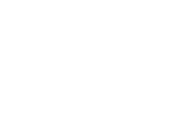 |
 |
 |

|
TextielLab
Credit: TextielMuseum
|
|
 |
TEXTIELMUSEUM &TEXTIELLAB
|

|
Posted 4 July 2013
|
Share this:
|
|
|
|
|
|
|
|
|
|
About the TextielMuseum
The TextielMuseum is a working museum. It brings inspiring exhibitions in the field of design and art and offers educational programs in a former textile factory.
The TextielLab of the TextielMuseum is a unique knowledge centre that is both a highly specialised workshop for producing experimental knits and woven fabrics as well as an open atelier where innovation can take centre stage. National and international designers, architects, artists and promising students are coached by product developers and technical experts to discover the endless opportunities in the field, from yarns, to computer-controlled techniques and handicrafts. The extensive library, the museum collection and the temporary exhibitions are an excellent research and inspiration resource.
Yearbook 2012 text:
The TextielLab is the inspiring atelier of the TextielMuseum where knowledge, technical expertise and materials come together. It is a creative laboratory allowing innovation to take centre stage. Where the factory looms of C. Mommers wove woollen cloth for 100 years, now computer-controlled textile machines have joined the ranks of traditional, mechanical looms. They are in constant use by international designers, artists and students, aided by a specialist team from the museum. Weaving is the main discipline at the TextielLab and increasingly the Lab is approached to advise in ambitious (interior design) projects as well to support designers in the development of textiles. A good example is the commission from the Noordbrabants Museum in ’s-Hertogenbosch. Together with designer Kiki van Eijk, fire-retardant wallcoverings were made for the Statenzaal (State Hall) of the former provincial government building. It was recently renovated and is part of the Noordbrabants Museum. After the completion of this interior design project, the same machines were used to weave fabric for Walter Van Beirendonck’s new fashion collection.
To meet the growing demand from designers and students, the knitting facilities have been expanded. In 2012, there was a noticeable shift to more projects from the fashion world. Well-known designers such as Conny Groenewegen often make use of the specialist knowledge and machines available at the TextielLab for knitwear. Karin van Dam used the new coarse-gauge knitting machine to create enormous, autonomous sculptures straight from the machine, thanks to the Knit & Wear technique.
As of 2012, we have become more selective with requests relating to weaving and knitting. We have chosen to focus on investing more in innovation and research. This means that the number of weaving and knitting projects will decrease. The Lab makes a selection based on motivation and innovation relating to a technique and/or material, as well as the level of artistry. The focus is on interior textiles, design and fashion.
Computer-controlled processing techniques such as digital printing and embroidery are often used for the development of graduation collections of Dutch and European arts students. Naturally handicraft techniques are also represented in the TextielLab. For example, large, hand-tufted rugs are made by artists such as Margot Berkman in the tufting workshop. There is also a finishing workshop, where four enormous wall hangings for an exhibition at the Centre for Fine Arts in Brussels were entirely hand-finished by the Lab’s in-house seamstress.
Increasingly, (textile) designers, architects, artists and students are recognising the value of the TextielLab as a specialist centre.
Info:
TextielMuseum
Goirkestraat 96
NL-5046 GN Tilburg
P O Box 4265
NL-5004 JG Tilburg
+31 (0)13-536775
info@textielmuseum.nl
www.textielmuseum.nl
|
|
|
|
|
|
|


